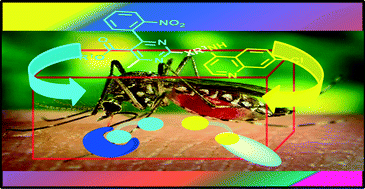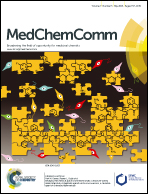Pyrimidine-based antimalarials: design strategies and antiplasmodial effects†
Abstract
Pyrimidine-containing compounds have attracted great attention because of their biological effects, therapeutic potential and flexibility in structural modification by way of diversifying various positions as well as heterocyclic ring transformations. Emergence of the Plasmodium parasite's resistance against first-line antimalarial drugs has fuelled research interest in the direction of designing new scaffolds as well as strategies to counter drug resistance. One of these strategies that has gained prominence is the synthesis of molecular hybrids encompassing two covalently linked pharmacophores. This review, covering publications up to 2015, describes chemistry and antiplasmodial effects of pyrimidine-based antimalarials, including hybrids of pyrimidine with other partners.


 Please wait while we load your content...
Please wait while we load your content...